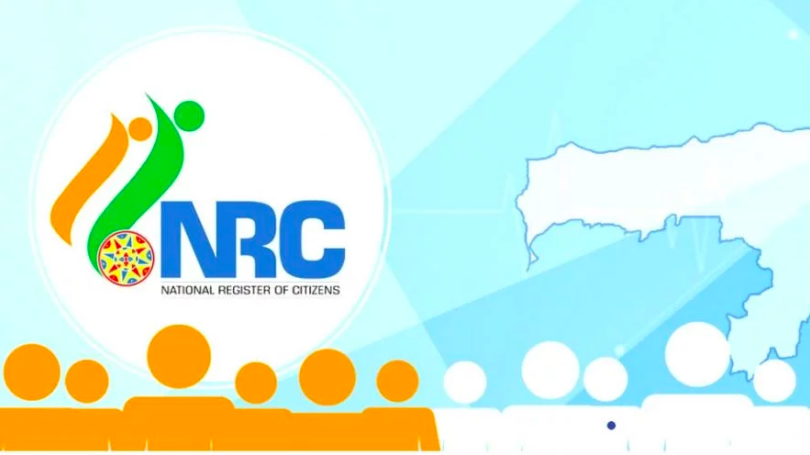Replug: Four Ways Citizens Can Repel Dangers of All-India NRC

In every second year after the turn of a decade, India undertakes a fresh population count as part of the census. The first synchronous census was held in 1881 and the sixteenth population count will be conducted in February 2020, with 1 March 2021 as the reference date.
The fifteenth census, conducted in 2011, counted the population and also collected, for the first time after 1931, data on socio-economic and caste status. This data was never analysed, as the self-reported castes and sub-castes were too many and difficult to aggregate into meaningful categories. Therefore, the 2021 census—or sixteenth enumeration of India’s population—will be based on a list of predetermined Scheduled Castes, Scheduled Tribes and Other Backward Classes, as categorised and notified by each state.
India conducts its census in two phases, namely, house-listing and population enumeration. Also, for the first time, the fifteenth census had collected additional data which was needed to prepare the National Population Register or NPR. The NPR was then used to generate a twelve-digit unique identification number for all usual (or registered) residents of India. This number was issued by the Unique Identification Authority of India or UIDAI, and is popularly known as the Aadhaar number.
However, it is not clear whether the NPR data was satisfactorily and accurately used to generate Aadhaar identities. During this phase, biometric information was also collected.
After the population count in March, the house-listing phase of the sixteenth census of 2021 is scheduled to take place, between April and September 2020. Once again, during the house-listing process, data for updating the NPR will be collected from all usual residents, along with their biometric details, which are now being considered essential for development and welfare planning.
At the same time, there is a new effort by the government of India to prepare a National Register of Indian citizens (NRIC), a mandate that it has anchored in two existing laws: the Citizenship Act of 1955 and the Citizenship (Registration of Citizens and Issue of National Identity Cards) Rules, 2003. Of course, now the Citizenship Bill, 2019 has also passed in the Lok Sabha, and it is also linked with the NRIC, though it is a tall order to attempt creating such a large register for the entire 1.4 billion population of the nation.
After reviewing the relevant acts, rules and directives, I find that the agency which has been empowered to prepare the NRIC is the Registrar General and Census Commissioner (RGCC), whose primary responsibility is to conduct the census operations and undertake the registration of births, deaths and marriages.[The RGCC is the registrar-general of births and deaths according to the related act passed in 1969. Further, paragraph 2(m) of the Citizenship Rules, 2003, states that the RGCC is the registrar general for the population register and for citizens registration.] Whether the RGCC has the wherewithal required to determine the “citizenship” of an individual is questionable. Yet, the Citizenship Rules, 2003, assign it the task of preparing the NRIC.
A look at the related acts and rules makes it clear that the house-listing, population count and population register (or NPR) are the primary databases that will be used to prepare the NRIC. There is a need to investigate the legality of multiple-agency data utilisation and what legal provisions allow the data collected through the census to be used for the purposes of NPR and NRIC.
Surrogate Citizenship Bill to aid NRIC
Further, the NRIC is likely to get support from a surrogate law, the Indian Citizenship Amendment Bill, 2016. Although this bill lapsed on 3 June 2019, it was reintroduced in the Lok Sabha by the current government on 9 December 2019, and was introduced in the Rajya Sabha on 11 December.
If this amendment passes in Parliament, refugees from minority communities, namely the Hindus, Jains, Buddhists, Sikhs, Parsis or Christians coming from Afghanistan, Bangladesh and Pakistan, will be eligible for Indian citizenship, excluding the Muslim community. It would have been most appropriate if this bill had included all South Asian nations including Nepal, Bhutan, Sri Lanka, Myanmar and Maldives. For, the corollary of this seemingly noble amendment is that only the Muslims living in India, but who end up being excluded from the NRIC list, are susceptible to legal arrest, impounding and extradition.
Local government officials belonging to the census department, the election commission and the district bureaucracy are responsible to prepare the so-called list of Indian citizens. Such lists are approved by state-level authorities, notified in the official gazette, and published as the “National Register of Citizens” pertaining to that state.
It then becomes the responsibility of individuals to check whether their own name, or those of members of their family, are listed in the register. Should they find name(s) missing, they can either accept their status as non-citizens, or they can approach a “Foreigners’ Tribunal” in their state to challenge their exclusion. Decisions of these tribunals are final, yet one can reach out to the hierarchical system of courts of law as the ultimate step to seek justice and secure one’s rights as an Indian citizen.
As is already common knowledge after the Assam experience, this process is not only cumbersome, but also complicated, costly, time-consuming and neither is it foolproof. This author’s key observation is that the Muslim community of India is under stress from the official, often irresponsible, discourse surrounding the extension of NRIC to the whole nation. Second, the Citizenship Amendment Bill is highly discriminatory. If passed, it can be misused in a manner that will put a majority of the poor, rural, illiterate and low-income Muslim households under risk of exclusion from the NRIC list. Murmuring among the Muslims that they should boycott the NRIC has begun.
Four possible safeguards
However, this author suggests that the people of India can seek the following four safeguards at the time of sharing their data with government agencies and functionaries:
One, between March and September 2020, when house-listing is undertaken across India, census officials will visit each home and household. During these visits, the respondents, or the heads of households, should seek from the officials a clearly written statement of purpose and promise that their data, collected for NPR during house-listing, and subsequently for population enumeration, will be used only for census counts, data aggregation and policy analysis.
Ideally, this statement must be signed by the President of India. It should be a generic promise, similar to the signature of the governor of the Reserve Bank of India that features on printed bank notes.
Two, after serving the written promise, the census officials must be asked to issue an acknowledgment of the fact that personal data was collected during their visit. This acknowledgment should say that the data will not be shared, nor used for any other purpose. This acknowledgment should record the time, date and place of data extraction.
Three, a printed copy of all the data collected must be issued to the individual for her own data file and future use. This data can also be made available to each individual through an online system of data retrieval.
Four and finally, the government must change its methodology and identify hot-spots or areas where illegal residents most likely reside. It would be instructive to recall that a similar effort in the United States of America, to incorporate a question in the census that asked people to state their citizenship was shot down by the US Supreme Court.
Prohibitive and wasteful spending on NRIC
To extend NRC across India will cost a mind-boggling Rs 3.8 lakh crore, according to my calculation. This scale of misapplication of funds will shave around 2% off the national GDP. Implementing the NRC in Assam cost the budget Rs 1,221 crore. In addition, it cost the applicants Rs 7,800 crore. If one extrapolates from this, to undertake NRIC across India will require Rs 3,83,874 crore (US$ 53.3 billion).
Consider the scale of this expenditure of Rs 3.8 lakh crore: In the current financial year (2019-’20) the budgetary allocation to the ministry of human resources development, including higher education, is Rs 94,853 crore, just about a quarter of what NRIC will cost. Similarly, the Ministry of Health was allocated Rs 62,398 crore by the budget. If Rs 3.8 lakh crore is spent on health, India’s healthcare budget would expand six-fold; or the education budget would grow four-fold. I find that the NRIC will cost more than even the defence budget of Rs 3.18 lakh crore.
Therefore, for reasons legal and financial, and for the human costs it will impose, it is a misconceived political decision of the Centre to extend NRC across India.
The author was member-secretary of the Sachar Committee and is with the US-India Policy Institute in Washington DC. The views are personal.
Get the latest reports & analysis with people's perspective on Protests, movements & deep analytical videos, discussions of the current affairs in your Telegram app. Subscribe to NewsClick's Telegram channel & get Real-Time updates on stories, as they get published on our website.
























